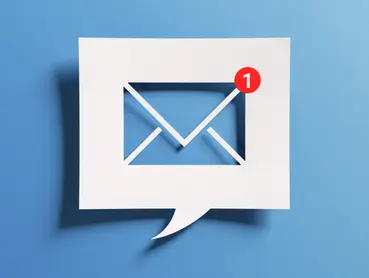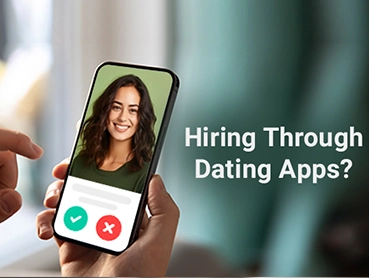5 tips to fuel your employee referral program

The Great Resignation – the economic phenomenon where workers are leaving jobs in droves – has been ongoing since the beginning of 2021. So far, in 2022, four million people quit their jobs every month. But many of these former workers don’t leave the workforce altogether. Instead, they change industries, start their own businesses, or find jobs with better pay and benefits.
This mass exodus has caused a skilled workforce labor shortage. Combine that with increased job openings, and it’s no wonder companies and their recruitment teams are having a hard time finding qualified candidates to fill open roles.
Many companies are beefing up their employment offers with higher wages, remote work options, and other benefits like wellness and work-from-home stipends in an effort to stand out in a candidate-driven market.
But you could be missing out on what could be the key to your hiring woes – an effective employee referral plan.
How an employee referral program helps
An employee referral program engages your organization’s current employees to refer connections of theirs as qualified job candidates. Rewards are typically offered to employees that provide a referral who becomes hired.
A referral program is arguably the best recruitment strategy you can use to hire qualified candidates who will mesh with organizational culture and stick around longer. Other ways an employee referral program helps include:
- You’ll spend less time completing the hiring process
- Your company will save on recruiting costs (yes – even factoring in employee rewards)
- Employee engagement will improve
- Workers will stay longer
- You’ll get a better return on your recruiting investment
Tips for your program
Sadly, many companies don’t take advantage of the treasure trove that a robust employee referral program can turn into.
Dedicating resources to your program will compel current employees to participate, which can eventually form a more qualified and happier workforce. It’s one of the best candidate-sourcing strategies available, and here are five tips to doing it right.
Promote your plan
Marketing your employee referral program, both internally and externally, is one of the most critical pieces of its implementation. You don’t want to put in the time to develop a program for employees to not even know it exists!
Mention the program in onboarding and training documents. For smaller organizations, give a friendly reminder about the program when announcing that you’re looking to fill a position.
Clarify processes
Employees should understand the processes and procedures for referring someone and receiving any rewards. If your processes aren’t clear, employees will be less likely to participate, and you won’t get as many referrals.
Make it as easy as possible for employees to refer potential candidates. This can happen in different ways, such as handing a resume to a supervisor, sending an email, or submitting referrals through an online portal.
Give good rewards
An employee who refers someone for a position is acting as the liaison between your company and the potential new employee. It can mean a lot of back-and-forth on their end up until you take the reins with communication.
Show employees, you value their time and dedication by giving them worthwhile rewards if their referral is hired. This could be monetary bonuses or extra vacation days.
Communicate with employees
You might not realize it, but it can sometimes be stressful for an employee to refer someone to an open job. They’re putting their reputation on the line with you and the company by asserting that their referral will be the right fit. They’re also trying to help their friends and colleagues by connecting them to a supposedly good employer.
By maintaining constant communication with your employee about the status of their referral, you build trust, establish transparency, and help to calm any of their nerves.
Keep improving
Making changes, big or small, to your employee referral program should be an ongoing process. No matter how great you feel the program is, there will always be a way to improve. Aim to continuously evaluate and adjust as needed. One way to do this is by asking for feedback from employees at every level.
Frequently asked questions
What is a typical employee referral bonus?
A $20 gift card isn’t going to cut it for a referral bonus. If you want to make the referral process worthwhile for employees, you’ll need to provide a proportional award. Referral bonuses tend to fall somewhere between $1,000 and $5,000, but the amount can vary depending on the seniority of the position being filled. For example, referring C-level executive warrants a higher reward than referring someone at an associate level.
How do you measure the success of an employee referral program?
There are several qualitative and quantitative ways to measure success. If you’re interested in the numbers, you can track:
- The percentage of referrals that become new hires
- The length of time each referral stays with the company in comparison to non-referred employees (retention rates)
- The number of referrals you receive
Looking for more anecdotal data? Ask for anonymous feedback from employees at every level and hired referrals.
What percentage of hires should be referrals?
There’s no exact rule for what percentage of hires should be referrals. But look at it this way – many employers report that referred hires are more productive, more likely to stay longer, and generally better quality than non-referred candidates.
Do referrals make better employees?
Companies report referrals to make better employees in general. Referrals who are hired tend to be more profitable, more productive, and a better overall fit.
Do referred employees stay longer?
On average, referred employees stay with a company longer. About half of all referred hires will stay with a company for more than three years. On the other hand, the same number of non-referred employees will leave after a year and a half.
The most likely reason referred hires stay longer is that they fit better with the company culture. An employee making a referral typically knows something about the potential candidate’s attitude and personality. As such, they’ll know if the person will make a good fit better than any interview will.
Take advantage of AI to retain referred candidates
Is your recruiting team taking full advantage of digital resources to find and retain the best candidates?
It may be difficult to find candidates who match the specific skill sets and abilities that your company requires. You can tackle this challenge with Arya Quantum, an AI recruiting tool that can be easily integrated into your existing ATS or VMS. You’ll find qualified candidates faster while simplifying the recruiting process.
This technology also allows you to communicate with potential candidates via text, email, and chatbot, all in one consolidated chat board. You can communicate the skills you’re looking to obtain from an employee and answer any questions that candidates may have.
Arya empowers you to achieve your recruitment goals, ensuring that your hiring process puts you in a position to find the right people every time.





